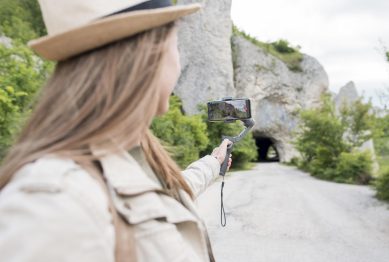Travel in 2025 is less about rushing between attractions and more about engaging with people, traditions, and ways of life. The rise of immersive travel for cultural understanding signals a global shift in what travelers value. Rather than simply documenting iconic landmarks, today’s travelers are seeking conversations with artisans, meals with local families, and opportunities to live—even briefly—like a local.
This is not just a niche preference. Surveys show that more than seven in ten global travelers want experiences that feel authentic, rooted in local communities, and reflective of cultural heritage. In other words, the emphasis has shifted from consumption to connection. Immersive travel for cultural understanding is becoming a defining theme of modern tourism.

Why Immersive Travel for Cultural Understanding Matters
Immersive travel for cultural understanding enriches travel in three powerful ways:
- Emotional connection: Travelers gain empathy and appreciation for cultural practices, traditions, and perspectives unlike their own. This builds bridges and reduces cultural stereotypes.
- Learning through participation: Instead of observing from afar, visitors engage directly—cooking with local chefs, weaving textiles, joining traditional festivals. These experiences create lasting memories anchored in learning.
- Sustainability and shared value: Unlike mass tourism, immersive travel often redistributes benefits by supporting small businesses, artisans, and families, while protecting cultural identity.
In an age of climate concerns and overtourism, cultural immersion also aligns with the goals of sustainable travel. It’s not just about “seeing” more—it’s about experiencing travel in ways that respect and uplift host communities.
Trend #1: Hyper-Local Travel and Hidden Cultural Gems
One of the biggest shifts is the growing interest in hyper-local experiences. Instead of crowded capitals or mainstream resorts, many travelers are seeking small towns, villages, and regional hubs where traditions remain vibrant.
For example, rural communities in Asia and Eastern Europe are increasingly on travelers’ radars. These destinations highlight local crafts, food traditions, and festivals that large cities often overshadow. Spending a few days in a village during a regional celebration allows travelers to witness customs that have been preserved for centuries.
Hyper-local travel is also tied to sustainability. By dispersing visitors beyond saturated urban centers, it reduces the strain on overcrowded hotspots while bringing economic opportunities to less-visited communities. For travelers, this means fewer crowds, richer encounters, and genuine cultural exchanges.
Trend #2: Creative Tourism as a Cultural Bridge
Creative tourism is one of the strongest forms of immersive travel for cultural understanding. It emphasizes participation in creative and cultural activities—allowing travelers to actively shape their experience rather than passively consume it.
Examples include:
- Cooking traditional dishes alongside local chefs and learning about ingredients’ cultural significance.
- Taking part in handicraft workshops, such as pottery, weaving, or wood carving, guided by artisans.
- Learning traditional music, dance, or storytelling from cultural practitioners.
What makes creative tourism so impactful is that it fosters a two-way exchange. Travelers learn cultural skills while locals have the opportunity to share knowledge and earn sustainable income. These experiences encourage respect for cultural traditions and help preserve them for future generations.
Trend #3: Luxury Meets Cultural Immersion
Luxury travel is no longer defined solely by five-star hotels or fine dining. High-end travelers increasingly want stories, not just services. Heritage hotels and boutique resorts now integrate immersive programs such as heritage walks, cooking with local chefs, or participating in regional festivals.
This blending of luxury and authenticity shows how cultural immersion appeals across income levels. Even travelers who enjoy premium comfort are now prioritizing experiences that feel meaningful, memorable, and culturally rich. For many, the most valuable souvenir is a story they can share—about a tradition they participated in or a lesson learned from a local host.
Trend #4: Immersive Technology Enhancing Cultural Understanding
While real-world encounters remain irreplaceable, technology is amplifying the immersive travel experience. Augmented reality (AR) and virtual reality (VR) tools are being used by museums and cultural institutions to prepare travelers for deeper engagement.
For example, AR can overlay cultural stories onto historical sites, helping travelers understand rituals or architectural details in context. VR exhibitions allow visitors to virtually explore cultural settings before their trip, priming them for meaningful in-person interactions.
Technology is not meant to replace human connection, but it enhances learning and cultural literacy—making real-world experiences even more impactful.
How to Practice Immersive Travel for Cultural Understanding
Planning immersive cultural experiences requires intention. Here are practical steps to incorporate it into your next journey:
1. Seek Homestays and Local Hosts
Staying with local families offers authentic insights into daily life, traditions, and values. Meals, conversations, and shared routines provide a level of cultural immersion that hotels rarely match.
2. Participate in Creative Workshops
Enroll in cooking classes, craft workshops, or music sessions. These activities not only teach cultural skills but also create connections with artisans and communities.
3. Explore Off-the-Beaten-Path Destinations
Research smaller towns, villages, or regional communities beyond the typical tourist maps. These destinations often host unique festivals or showcase crafts and traditions not found elsewhere.
4. Choose Sustainable, Community-Focused Travel
Support businesses and operators that invest in their local communities. Cultural immersion is most meaningful when it uplifts the people whose traditions you experience.
5. Blend Technology With Real-World Experience
Use AR or VR before visiting heritage sites to gain context, but prioritize in-person engagement when you arrive. Technology should enrich, not replace, cultural encounters.
6. Slow Down and Reflect
Spend more time in fewer places. This allows for deeper interaction, personal reflection, and genuine cultural exchange, rather than rushing from one attraction to another.
Looking Ahead: The Future of Immersive Travel
The demand for immersive travel for cultural understanding will only grow in the coming years. As travelers become more conscious of sustainability and cultural preservation, they are choosing experiences that are slower, more thoughtful, and more participatory.
Destinations will adapt by highlighting authentic local traditions, creating opportunities for creative exchanges, and developing experiences that balance visitor engagement with cultural protection. Hospitality providers—from budget homestays to luxury hotels—are integrating cultural programs to meet this demand.
Meanwhile, technology will complement the experience by making cultural learning more accessible and engaging. But the heart of immersive travel will remain the same: connecting people through shared stories, traditions, and human interaction.
Final Thoughts
Immersive travel for cultural understanding is not just a passing trend—it is redefining how people travel in 2025 and beyond. Whether through homestays, artisan workshops, rural exploration, or cultural festivals, travelers are choosing experiences that deepen empathy, foster respect, and support local communities.
In the end, the most memorable journeys will not be measured by the landmarks we visit but by the connections we create, the traditions we share, and the understanding we bring home. Immersive travel for cultural understanding bridges cultures, strengthens communities, and reminds us that travel is most powerful when it is personal.
References
- Destination marketing 2025 and the power of authentic cultural experiences, https://envisionitagency.com
- Tourism Trends 2025: Future of Travel, https://www.trappetravel.com
- European ‘detour destinations’ are 2025’s new travel trend, https://www.myjournalcourier.com









